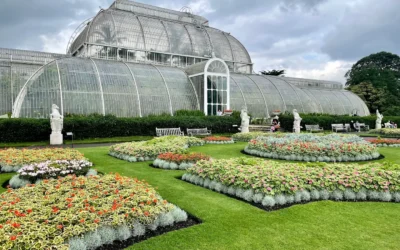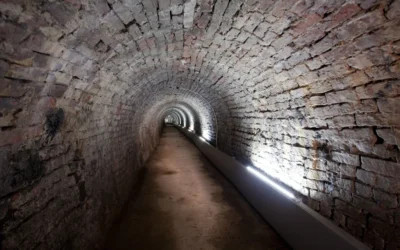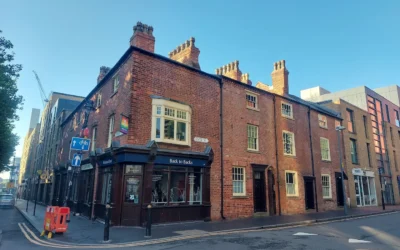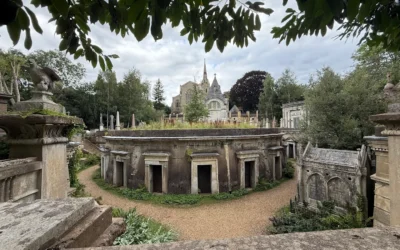St Pauls Cathedral
St Pauls Cathedral: Everything You Need to Know
Step into the heart of London’s history at St. Paul’s Cathedral, an architectural masterpiece that has stood as a symbol of resilience and beauty for over 300 years. Designed by Sir Christopher Wren after the Great Fire of London in 1666, this magnificent Anglican cathedral is not only a place of worship but also a treasure trove of art, history, and culture.
With its iconic dome, one of the largest in the world, and its role in historic events like the wedding of Prince Charles and Lady Diana Spencer, St. Paul’s offers visitors a chance to explore centuries of British heritage. Whether you’re climbing to the Golden Gallery for panoramic views or admiring the intricate mosaics, St. Paul’s promises an unforgettable experience.
Location
St. Paul’s Cathedral is located at St. Paul’s Churchyard, London EC4M 8AD, United Kingdom, in the City of London, atop Ludgate Hill, the highest point in the area. Its central position near landmarks like the Millennium Bridge and Tate Modern makes it a focal point for exploring London’s historic and cultural heart. Use apps like Google Maps or Citymapper for precise navigation.
Opening Hours
St. Paul’s Cathedral is open for sightseeing from Monday to Saturday, with doors typically opening at 8:30 AM on Monday, Tuesday, Thursday, Friday, and Saturday, and at 10:00 AM on Wednesdays. The last entry for sightseeing is at 4:00 PM, with the cathedral closing at 4:30 PM. On Sundays, the cathedral is open for worship only, with services typically from 8:00 AM to 6:00 PM. Opening times may vary due to special services or events, so check the official calendar before your visit.
How to Get There
St. Paul’s Cathedral is conveniently located in central London, making it easily accessible by various modes of transportation:
- By Tube: The nearest station is St. Paul’s on the Central Line, a 2-minute walk (130 yards) from the cathedral. Other nearby stations include City Thameslink (5-minute walk) and Blackfriars (7-minute walk), both served by Thameslink and other rail services.
- By Bus: Routes 4, 11, 15, 23, 25, 26, 100, and 242 stop near St. Paul’s, with stops at St. Paul’s Churchyard or nearby streets. Check Transport for London for schedules.
- By Train: City Thameslink and Blackfriars stations are within a 5-7 minute walk, with connections from London and beyond.
- By Bicycle: Santander Cycles docking stations are within a 3-minute walk (300m) on streets like Paternoster Square. Visit the Santander Cycles website for details.
- By Car: On-street parking is limited, and the nearest public car park is Baynard House on Queen Victoria Street, a 6-minute walk (400m). Disabled badge holders can find designated bays via the City of London’s interactive map.
- By Coach: On-street coach parking is available within a 7-minute walk (500m) on Angel Street, St. Martin’s Le Grand, and Queen Victoria Street.
- By Foot: A scenic 15-20 minute walk from Trafalgar Square or the South Bank via the Millennium Bridge offers a picturesque approach.
For real-time travel updates, use TfL Go or Citymapper.
Best Time to Visit
For a quieter experience, visit St. Paul’s Cathedral on weekdays, particularly Monday, Tuesday, or Thursday, ideally in the morning when it opens at 8:30 AM. Wednesdays have a later opening at 10:00 AM, and Fridays and Saturdays are the busiest days due to higher tourist numbers. Spring (March–May) and autumn (September–November) offer mild weather and fewer crowds compared to the peak summer season (June–August).
Winter visits (December–February) can be quieter but check for festive services that may affect sightseeing hours. Special events, like the 2025 outdoor exhibition “Saving St Paul’s: The Watch and the Second World War” (May–October), may draw larger crowds, so plan accordingly using the what’s on page.
Tickets and Costs
Sightseeing at St. Paul’s Cathedral requires a ticket, while attending services or private prayer is free. As of 2025, ticket prices are approximately:
| Ticket Type | Price |
| Adult (18-64) | £26.00 |
| Child (6-17) | £10.00 |
| Child (0-5) | Free |
| Student (with valid ID) | £23.00 |
| Senior (65+) | £23.00 |
| Family (2 adults + 2 children) | £62.00 |
| Disabled Visitor | £23.00 |
| Disabled Carer/Companion | Free |
| £1 Tickets (Eligible Benefits) | £1.00 |
- Discounts: Concessions are available for students, seniors, and families. UK visitors receiving Universal Credit, Pension Credit, or Employment Support Allowance (ESA) can access £1 tickets for one adult and up to four children (6-17). Free entry is offered for group leaders (15+ visitors) and former St. Paul’s choristers.
- Inclusions: Tickets include access to the cathedral floor, crypt, and dome galleries (Whispering, Stone, and Golden), plus multimedia guides in nine languages (English, French, German, Italian, Spanish, Portuguese, Mandarin, Japanese, Korean).
- Booking: Purchase tickets online via the tickets page to avoid queues, or buy on-site. Holders of the London Pass or Go City Explorer Pass gain free entry without pre-booking.
- Note: Prices may vary, so check the ticket types page for updates.
What to Expect
A visit to St. Paul’s Cathedral immerses you in architectural splendor and historical significance across its five levels:
- Cathedral Floor: Marvel at the grand nave with its vaulted ceiling, intricate mosaics, and monuments like Wellington’s Monument and the marble effigy of John Donne, bearing scorch marks from the Great Fire of 1666.
- The Dome: Climb 257 steps to the Whispering Gallery, known for its unique acoustics, 376 steps to the Stone Gallery, and 528 steps to the Golden Gallery for panoramic views of London’s skyline.
- The Crypt: Explore the resting place of notable figures like Admiral Lord Nelson, the Duke of Wellington, and Sir Christopher Wren, alongside the OBE Chapel and artistic memorials.
- Artworks: Admire works like William Holman Hunt’s The Light of the World and Henry Moore’s Mother and Child: Hood, plus Victorian mosaics and modern installations.
- Exhibitions and Events: From May to October 2025, the free outdoor exhibition “Saving St Paul’s: The Watch and the Second World War” honors the volunteers who protected the cathedral during the Blitz.
A typical visit lasts 2-3 hours, with guided tours (included in admission) and multimedia guides enhancing the experience. Facilities include the Crypt Café for light meals, accessible toilets, and a gift shop with cathedral-themed souvenirs. The cathedral hosts daily services, such as Choral Evensong, which are free to attend and feature the renowned cathedral choir.
Safety and Accessibility
St. Paul’s Cathedral ensures a safe and inclusive environment:
- Safety: The cathedral features 24/7 security camera coverage, regular patrols, trained security staff, and thorough entry checks. Its close relationship with local police enhances safety. Visitors should stay vigilant for pickpockets in crowded areas and avoid bringing bags larger than 45cm x 30cm x 25cm, as there’s no cloakroom.
- Accessibility: The cathedral floor and crypt are accessible via ramps and lifts, with free wheelchair hire available (first-come, first-served). The dome galleries require climbing stairs (257 to Whispering Gallery, 376 to Stone Gallery, 528 to Golden Gallery), making them unsuitable for those with mobility issues. Features include:
- British Sign Language (BSL) Guides: Free digital guides for deaf or hard-of-hearing visitors.
- Audio-Described Tours: Available for blind or partially sighted visitors.
- Sensory Support: Quiet spaces and sensory maps for neurodiverse visitors.
- Assistance Dogs: Welcome throughout.
- Accessible Toilets: Located in the crypt and near the main entrance.
For detailed accessibility information, visit the accessibility page or contact info@stpauls.co.uk.
History and Background
St. Paul’s Cathedral traces its origins to AD 604, when the first church dedicated to St. Paul was founded on Ludgate Hill. The current English Baroque structure, designed by Sir Christopher Wren and completed in 1710, rose from the ashes of the Great Fire of London, which destroyed the previous Gothic cathedral (Old St. Paul’s) in 1666. As the seat of the Bishop of London and the mother church of the Diocese of London, St. Paul’s has hosted pivotal events, including the funerals of Winston Churchill and Margaret Thatcher, the wedding of Prince Charles and Lady Diana Spencer, and jubilee celebrations for Queen Elizabeth II.
Its iconic dome, standing 111 meters (364 feet) tall, survived the Blitz, becoming a symbol of London’s resilience. Fun Fact: The Whispering Gallery’s unique acoustics allow a whisper against one wall to be heard clearly on the opposite side, 112 feet away.
Nearby Attractions
St. Paul’s Cathedral’s central location in the City of London makes it ideal for exploring nearby landmarks:
- Monument to the Great Fire of London (10-minute walk): A 202-foot column commemorating the 1666 fire, with panoramic views from the top (The Monument).
- Leadenhall Market (12-minute walk): A Victorian covered market, famous as a Harry Potter filming location (Leadenhall Market).
- St. Dunstan in the East Church Garden (10-minute walk): A tranquil ruined church turned public garden (Visit London).
- Southwark Cathedral (15-minute walk): A historic Gothic cathedral on the south bank of the Thames (Southwark Cathedral).
- Tate Modern (10-minute walk via Millennium Bridge): A world-renowned modern art gallery in a former power station (Tate Modern).
- Shakespeare’s Globe (12-minute walk): A reconstructed Elizabethan theatre offering tours and performances (Shakespeare’s Globe).
Combine your visit with a walk across the Millennium Bridge to Tate Modern and a stop at Leadenhall Market for a full day of exploration.
Practical Tips
To ensure a smooth visit to St. Paul’s Cathedral:
- Book Tickets Online: Reserve via the tickets page to avoid queues, especially during peak seasons.
- Travel Light: Bags larger than 45cm x 30cm x 25cm are not permitted, and there’s no cloakroom.
- Photography: Personal photography is allowed, but flash, tripods, and commercial photography require permission.
- Dress Code: As a place of worship, modest attire is appreciated; avoid hats inside.
- Wear Comfortable Shoes: The dome climb involves up to 528 steps, so sturdy footwear is essential.
- Attend Services: Free services, like Choral Evensong, offer a chance to experience the cathedral’s choir; check the worship page.
- Check Events: Look for exhibitions, talks, or concerts, like the 2025 “Saving St Paul’s” display, on the what’s on page.
- Weather Prep: Bring a raincoat for London’s unpredictable weather, especially for outdoor areas like the Stone Gallery.
FAQs
What are the opening hours of St. Paul’s Cathedral?
The cathedral is open for sightseeing Monday to Saturday, from 8:30 AM (10:00 AM on Wednesdays) to 4:30 PM, with last entry at 4:00 PM. Sundays are for worship only. Check the official calendar for updates.
How much does it cost to visit St. Paul’s Cathedral?
Sightseeing tickets are approximately £26 for adults and £10 for children (6-17). Family tickets (£62 for 2 adults + 2 children), student/senior concessions (£23), and £1 tickets for eligible benefits recipients are available. Worship and private prayer are free.
Is St. Paul’s Cathedral suitable for children?
Yes, it’s family-friendly with multimedia guides and tours tailored for kids, though the dome climb may require adult supervision due to stairs.
Are there any discounts available for St. Paul’s Cathedral?
Discounts include family tickets, student/senior concessions, and £1 tickets for UK visitors on benefits like Universal Credit. London Pass holders enter free.
How long does it take to visit St. Paul’s Cathedral?
A typical visit lasts 2-3 hours, covering the cathedral floor, crypt, dome galleries, and guided tours.
Is photography allowed at St. Paul’s Cathedral?
Personal photography is permitted, but flash, tripods, and commercial photography are prohibited without permission.
Are there guided tours available at St. Paul’s Cathedral?
Yes, guided tours and multimedia guides in nine languages are included with admission. Check the visit page for schedules.
What’s the best way to get to St. Paul’s Cathedral from the city center?
Take the Central Line to St. Paul’s Underground Station, a 2-minute walk from the cathedral, for the quickest route.
Is St. Paul’s Cathedral wheelchair accessible?
The cathedral floor and crypt are accessible via ramps and lifts, but the dome galleries require stairs. Wheelchair hire and accessible facilities are available; see the accessibility page.
Are there dining options near St. Paul’s Cathedral?
The Crypt Café offers light meals and refreshments, with additional cafes and restaurants in nearby Paternoster Square and along the Thames.
Royal Botanic Gardens Kew
Royal Botanic Gardens, Kew | Everything You Need to Know Welcome to the Royal Botanic Gardens, Kew, a UNESCO World Heritage Site and one of the world’s leading botanic gardens. Located in southwest London, Kew Gardens is home to over 50,000 living plants and millions...
Victoria Tunnel
Victoria Tunnel | Everything You Need to Know Step into the hidden depths of Newcastle upon Tyne with a visit to the Victoria Tunnel, a remarkable subterranean passage that tells the story of the city’s industrial and wartime heritage. Constructed in 1842 to transport...
Birmingham Back to Backs
Birmingham Back to Backs | Everything You Need to Know Step into the past at the Birmingham Back to Backs, a captivating historical attraction that brings to life the stories of working-class families who lived in Birmingham’s last surviving court of back-to-back...
The Chocolatarium
The Chocolatarium | Everything You Need to Know Welcome to The Chocolatarium, a delightful chocolate experience nestled in the heart of Edinburgh’s historic Old Town. This unique attraction is a must-visit for chocolate enthusiasts of all ages, offering a perfect...
Highgate Cemetery
Highgate Cemetery | Everything You Need to Know Step into a world where history, art, and nature intertwine at Highgate Cemetery, one of London’s most evocative and historic burial grounds. Opened in 1839 as part of the “Magnificent Seven” cemeteries, this Grade I...





